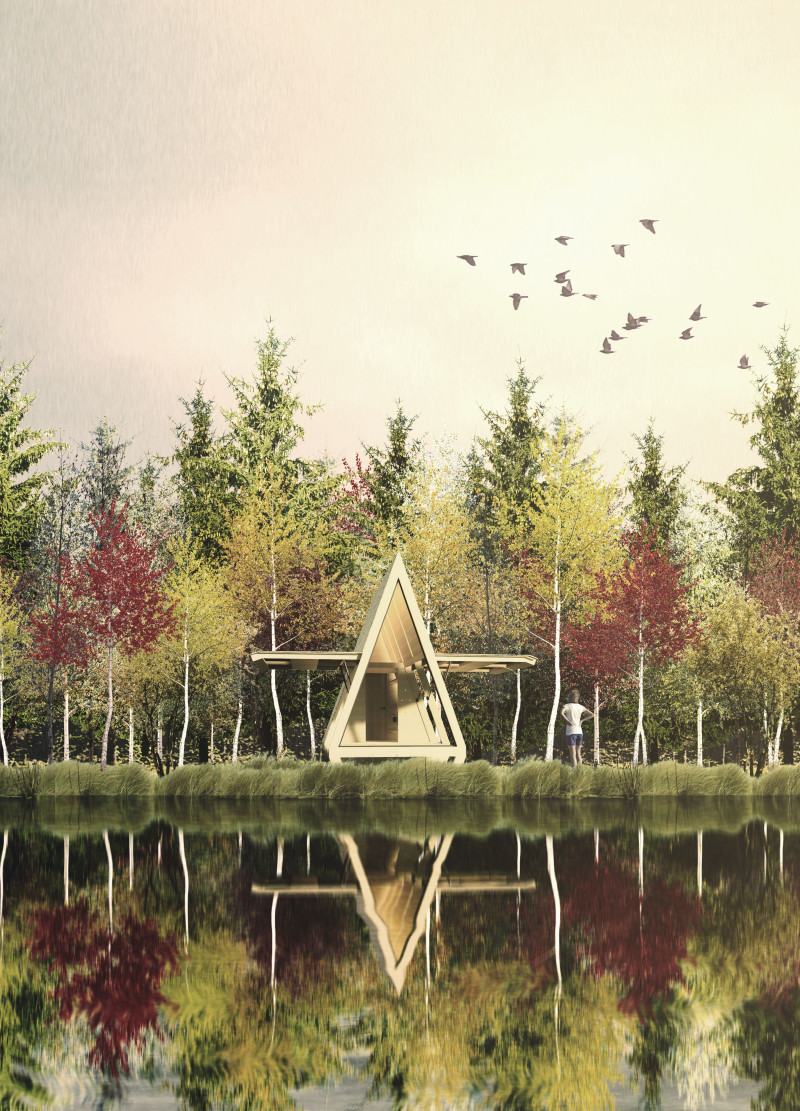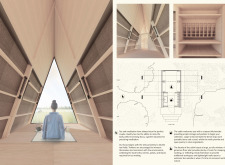5 key facts about this project
The Ozolint Tea Hut Proposal is located in the tranquil forests of Latvia. It serves as a retreat for trekkers, allowing them to engage with nature through activities such as tea brewing and meditation. The design is inspired by traditional Latvian architecture, with a pitched roof that resembles the trees surrounding the hut, creating a harmonious relationship between the structure and its natural environment.
Design Concept
The core idea behind the design is to offer an immersive experience that balances personal reflection with community interaction. The layout includes distinct spaces for sleeping, working, and gathering, enabling users to customize their experience based on their own needs and the changing seasons. The building invites guests to connect deeply with the landscape.
Material Selection
The structure features a simple A-frame design made from locally sourced pine. This material is chosen for its strength and durability, making it suitable for the varied weather conditions in the area. Pine also has good thermal properties, which helps maintain a comfortable interior.
Cork is another key material in the design, used for both the exterior and interior finishes. As a sustainable option, cork adds a natural texture and warmth to the spaces, reinforcing the connection to the environment. Its environmentally friendly nature supports the project's dedication to ecological responsibility.
Spatial Features
Large acrylic windows are an important feature of the cabin, providing plenty of natural light and views of the surrounding forest. This design creates a strong relationship between indoor and outdoor environments, encouraging users to appreciate the natural beauty at all times. Additionally, hooks in the pine framing are available for hanging plants and tools in the meditation area, encouraging a personalized and adaptive space.
The design also includes practical external storage at the base of the structure, which allows for the organization of additional items while maintaining a cohesive appearance with the landscape. Overall, the cabin fosters a connection to nature through its thoughtful design and materials, inviting occupants to gather and reflect in a peaceful setting.





















































